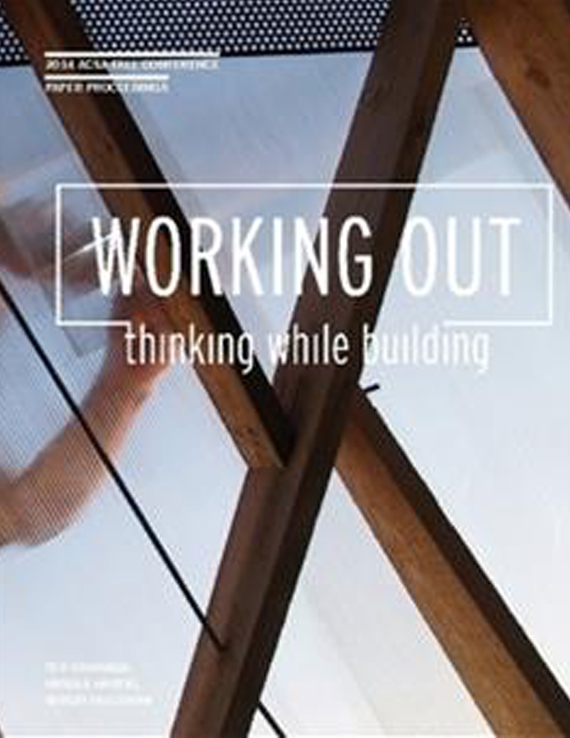Author(s): Lisa Huang
It should be noted that fingers are not born with brains, these develop gradually with the passage of time and with the help of what the eyes see. The help of the eyes is important, as important as what is seen through them. That is why the fingers have always excelled at uncovering what is concealed. Anything in the brain-in-our-head that appears to have an instinctive, magical, or supernatural quality—whatever that may mean—is taught to it by the small brains in our fingers. In order for the brain-in-the-head to know what stone is, the fingers have to touch it, to feel its rough surface, its weight and density, to cut themselves on it. 1 Our first-hand experiences are instrumental in the understanding of the world around us. Learning occurs not only through visual or auditory means but also through tactile engagement. Jose Saramego’s words are particularly pertinent for the building design field in that cutting oneself on stone provides critical knowledge in comprehending the parameters of working with the material. The value of working hands-on with materials and physically engaging matter must also account for the potential of stumbles along the way.It is significant to examine the distinction between explicit and tacit knowledge in architectural design education. There is a cultural shift of thinking in our students that only focuses on successes; however, it is the failures that are more revealing in the developmental learning process. The typical studio design work that is done on paper or in the computer can easily mask potential mistakes where as those errors cannot be hidden when confronted with the physical presence of the real thing. In professional practice, the desire to experiment is often stripped away. There is too much at stake to fail with issues of budgets, schedules, life safety, and liability looming over each project. Design education is an ideal time to take risks and learn from mistakes where one cannot be penalized or held liable for naïve propositions.Design students arguably learn more through an active experience than learning exclusively through lectures, images, and readings. This paper will examine the student outcomes and work produced in a material workshop seminar where students experimented hands-on and at full scale with building materials. What do students learn from the process of working hands-on with building materials? How does one teach what is difficult to teach? With the attention on active engagement with material studies, the intention of this paper is to investigate different modes of failure encountered to evaluate their merit in cultivating building design knowledge. Note:1. Jose Saramego, The Cave (New York: Houghton Mifflin Harcourt, 2002), 67.
Volume Editors
Sergio Palleroni, Ted Cavanagh & Ursula Hartig
ISBN
978-0-935502-94-7

 Study Architecture
Study Architecture  ProPEL
ProPEL 
